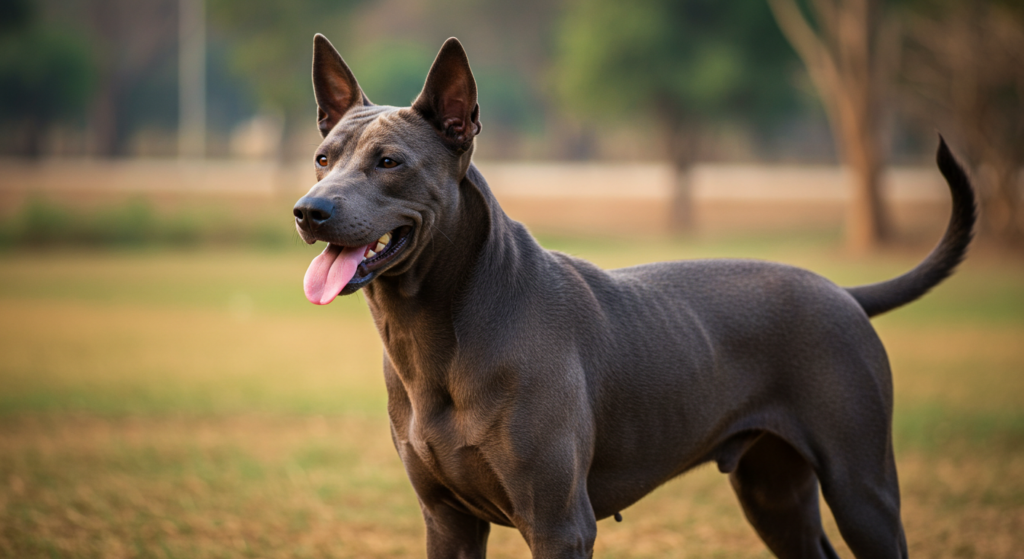Table of Contents
- Introduction
- Origin and History
- Physical Characteristics
- Temperament and Behavior
- Care and Maintenance
- Health Considerations
- Training and Socialization
- FAQs
- Conclusion
Introduction
The Thai Ridgeback is a rare and ancient dog breed originating from Thailand, known for its distinctive blue or spotted tongue and ridge of hair along its back. As part of the Foundation Stock Service (FSS), this breed has served multiple roles, including hunting, guarding, and companionship. With its short coat and athletic build, the Thai Ridgeback shares similarities with the Rhodesian Ridgeback, yet stands out due to its unique blue tongue trait.
This article explores the breed’s history, appearance, temperament, care needs, and more, providing a comprehensive guide for potential owners and dog enthusiasts.

Origin and History
The Thai Ridgeback has been a part of Thailand’s rural landscape for centuries, primarily used for hunting, guarding property, and companionship. Unlike many modern breeds, the Thai Ridgeback remains relatively unaltered by selective breeding, preserving its natural instincts and physical traits.
Recognized by the American Kennel Club (AKC) under the Foundation Stock Service, this breed is still rare outside its native country but is gaining popularity due to its loyalty, intelligence, and striking appearance.
Physical Characteristics
Coat and Color
- Short, smooth coat (easy to maintain)
- Common colors: black, blue, red, fawn
- Ridge of hair running along the spine (similar to the Rhodesian Ridgeback)
Distinctive Features
- All-blue or spotted blue tongue (a rare trait shared with only a few breeds)
- Muscular, athletic build (built for agility and endurance)
- Erect ears and curled tail (enhancing alertness)
| Feature | Description |
|---|---|
| Height | 20–24 inches (male), 18–22 inches (female) |
| Weight | 35–75 lbs |
| Lifespan | 12–15 years |
Temperament and Behavior
The Thai Ridgeback is known for its:
✔ Loyalty – Forms strong bonds with family
✔ Protectiveness – Excellent watchdog and guard dog
✔ Independence – Can be strong-willed, requiring firm training
✔ High Energy – Needs regular exercise to prevent boredom
While affectionate with their family, they can be reserved around strangers, making early socialization crucial.
Care and Maintenance
Grooming Needs
- Low-maintenance coat (weekly brushing suffices)
- Regular nail trimming, ear cleaning, and dental care
Exercise Requirements
- Daily walks, runs, or play sessions
- Enjoys agility training and interactive games
Diet
- High-quality protein-based diet
- Portion control to prevent obesity
Health Considerations
The Thai Ridgeback is generally healthy, but potential issues include:
- Hip Dysplasia
- Dermoid Sinus (a congenital skin condition)
- Allergies
Routine vet check-ups and a balanced diet help maintain longevity.
Training and Socialization
- Early socialization is key to curb aloofness.
- Positive reinforcement works best (avoid harsh methods).
- Mental stimulation (puzzle toys, obedience training) prevents destructive behavior.
FAQs
1. Is the Thai Ridgeback a good family dog?
Yes, but they do best with experienced owners who can manage their strong-willed nature.
2. How rare is the Thai Ridgeback?
Extremely rare outside Thailand, but growing in popularity.
3. Do all Thai Ridgebacks have a blue tongue?
Most have all-blue or spotted blue tongues, but some may have partial pigmentation.
4. Are they aggressive?
Not inherently aggressive, but protective—proper training is essential.
5. How much exercise do they need?
At least 60-90 minutes of vigorous activity daily.
Conclusion
The Thai Ridgeback is a unique, loyal, and athletic breed with a striking blue tongue and ridgeback feature. While rare, they make excellent companions for active owners who appreciate an independent yet devoted dog. With proper training, socialization, and care, this breed thrives as both a guardian and family pet.
